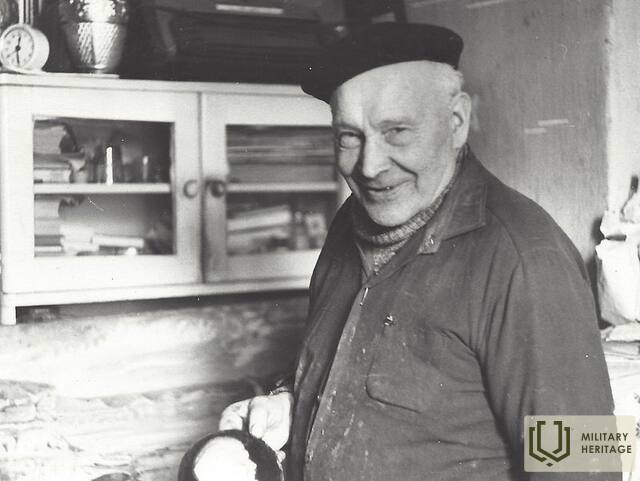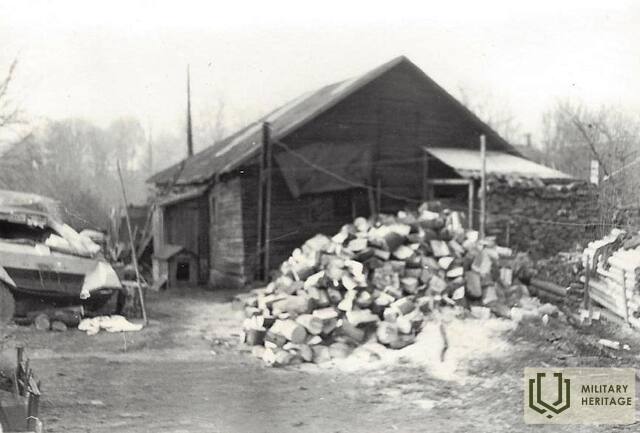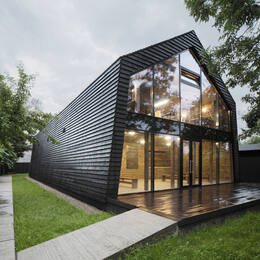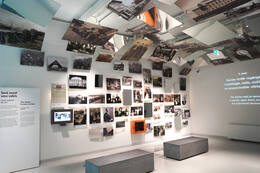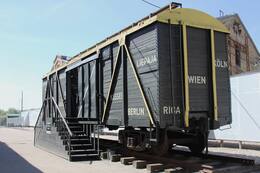Prisiminimai apie Žanį Lipkę
Po sovietų okupacijos sekė vokiečių okupacija. Naciai vykdė nusikaltimus prieš Latvijos gyventojus. Viena iš šių etninių grupių buvo žydai. Iš pradžių buvo įkurti getai, bet vėliau sekė žydų naikinimas. Daugelis latvių gelbėjo žydus nuo sunaikinimo. Vienas iš jų buvo Žanis Lipkė.
„(..)“Jis atvyko į sutartą vietą tiksliai taip, kaip ir žadėjo – penktą valandą ryto. Mačiau jį kaip įspūdingą, tvirto sudėjimo vyrą, 40–45 metų amžiaus. Jūreivio sijonas ir, nepaisant šalto oro, jūreivio kepurė ant galvos. Jis įdėmiai į mane pažvelgė. Vėliau jis man pasakė, kad per pirmąsias mūsų pažinties minutes nusprendė, jog aš galiu būti tas, kuris paruoš naują bazę geto pabėgėliams. Aš taip pat nuo pirmos akimirkos pradėjau visiškai pasitikėti šiuo žmogumi. Sieloje jaučiau, kad jis negali manęs išduoti. Jo savitvarda ir ramybė suteikė man viltingo pasitikėjimo savo jėgomis.
Jis pasakė, kad turime nedelsdami išvykti. Kur? Iš kelių neaiškių frazių supratau, kad turėsime nuvykti į kokią nors sodybą. Stengdamasis būti sąžiningas, pasakiau Lipkei, kad, deja, net tramvajui pinigų neturiu ir niekada negalėsiu jam atsidėkoti už rūpestį. Žanis mane pertraukė: „Apie ką tu kalbi! Ar aš atėjau pas tave dėl pinigų?!“(..)“
Willy Frisch savo knygoje „Kaip žvaigždė tamsoje“ prisimena Jeaną Lipką.
Susijusi laiko juosta
Susijusios temos
Susijusios vietos
Žanio Lipkės memorialas
Žanio Lipkės memorialas yra Kipsaloje, Rygoje. Žanio Lipkės muziejus yra bene vienas labiausiai paslėptų muziejų Rygoje. Nesuprantama memorialo vieta nėra atsitiktinumas ir turi simbolinę reikšmę. Jis įrengtas buvusios požeminės slėptuvės, kuri buvo sukurta žmonėms gelbėti Antrojo pasaulinio karo vokiečių okupacijos metu, vietoje. Čia Žanis Lipke ir jo šeima išgelbėjo 55 žydus. Šiandien memorialas pastatytas šalia Žanio Lipkės šeimos namo. Memorialas „Juodasis tvartas“ yra simbolinis pastatas, kuriame buvo teikiama ir priimama prieglauda. Pastato dizainas buvo paimtas iš istorinių Kipsalos žvejų ir jūreivių degutu dengtų trobelių. Šios trobelės buvo pastatytos naudojant baržų medžiagas, todėl jos turėjo labai savitą spalvą ir deguto kvapą. Tačiau unikali ne tik šios istorinės vietos istorija. Taip pat pastebimas ir tai, kaip muziejus perteikia savo žinią. Bendras dizainas panašus į Biblijoje aprašytą Nojaus arką, be to, jis primena į krantą ištrauktą ir apvirtusią valtį – valtį, kuri atliko savo užduotį. Šio memorialo koncepcija kyla iš šios vietos ir istorijos istorinio tikslumo bei su ja susijusių liudijimų. Tai istorija apie laisvės troškimą, neįtikėtiną pabėgimą ir pasitikėjimą. Pakeliui į muziejų taip pat galėsite pamatyti istorinius Pardaugavos pastatus.
Latvijos okupacijos muziejus
Muziejuje eksponuojama Latvijos istorija nuo 1940 iki 1991 m., nacistinės Vokietijos ir Sovietų Sąjungos okupacijos laikotarpiu. „Ateities namai“ – tai žinomo Amerikos latvių architekto Gunāro Birkertaus suprojektuoto Okupacijos muziejaus rekonstrukcijos ir išplėtimo projektas, taip pat nauja muziejaus ekspozicija. Ekspoziciją „Čekos istorija Latvijoje“ sukūrė Okupacijos muziejus, ji yra buvusiame SSRS Valstybės saugumo komiteto (KGB) pastate „Kampiniame name“. Latvijos okupacijos muziejus buvo įkurtas 1993 m. Jis pasakoja ilgai slėptą Latvijos valstybės, tautos ir žemės likimo istoriją dviejų užsienio totalitarinių valstybių okupacijos laikotarpiu nuo 1940 iki 1991 m. 2020 m. pabaigoje muziejuje buvo daugiau nei 70 000 įvairių istorinių eksponatų (dokumentų, nuotraukų, rašytinių, žodinių ir daiktinių įrodymų, daiktų ir atminimo dovanų). Muziejaus specialistai įrašė daugiau nei 2400 vaizdo įrašų, todėl tai viena didžiausių okupacijos kolekcijų Europoje. Latvijoje, Lietuvoje ir Estijoje klostęsi įvykiai aiškiai parodo, ką tautoms teko ištverti valdant dviem totalitariniams režimams.
Rygos getas ir Latvijos Holokausto muziejus
Rygos geto ir Latvijos Holokausto muziejus yra įsikūręs Rygoje, netoli Rygos centrinio turgaus ir Rygos centrinės stoties. Muziejus buvo atidarytas 2010 m. toje vietoje, kur anksčiau buvo miesto sandėliai. Jis įsikūręs istorinėje miesto dalyje, šalia buvusio žydų geto sienos. Geto teritorija yra unikali, nes architektūros požiūriu ji nepasikeitė nuo Antrojo pasaulinio karo. Tai memorialas, skirtas žydų tautos tragedijai. Vokietijos politika žydų gyventojų atžvilgiu Latvijoje iki 1939 m. pabaigos buvo tokia, kad Vokietijos diplomatai ir politikai bandė daryti spaudimą Latvijos vyriausybei, kad ši imtųsi veiksmų prieš žydus, apribodama jų laisvę. Po Baltijos vokiečių emigracijos 1939 m. Vokietijos ambasada nebeturėjo tokios geros prieigos prie informacijos apie gyventojų nuotaikas ir įvykius Latvijoje kaip anksčiau. Kai Raudonoji armija okupavo Latviją, ji manipuliavo visuomene, kad gautų žydų gyventojų paramą naujajai okupacinei valdžiai. Tačiau po to, kai režimas pradėjo represijas prieš visą visuomenę, parama sparčiai sumažėjo. Dėl viso to tarp žmonių susiformavo gilus susiskaldymas. Vėliau kitas režimas – Vokietija – bandė tuo pasinaudoti. Jie tikėjosi, kad vietos gyventojai persekios ir puls žydus, tačiau taip neatsitiko. Taigi, Vokietija pakoregavo savo požiūrį ir parengė naują planą – iš pradžių įkurti žydų getą, o vėliau sunaikinti jo gyventojus.




